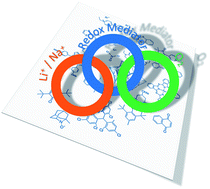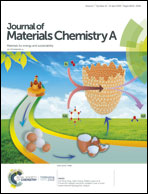Redox mediators: a shuttle to efficacy in metal–O2 batteries
Abstract
Due to the increase in global energy demand and the unsustainability of burning fossil fuels, the search for optimized energy systems has become a priority in recent years. In 1990, lithium batteries revolutionized the energy market; however, the unceasing increase in demand and the limited lithium supplies induce the need for alternative energy storage systems. Li–O2 batteries are promising to make a difference in applications such as those related to electromobility. In the last few years the interest in metal–air batteries has increased exponentially; however, several challenges must be overcome to improve their efficiency. For this system to be viable, it is necessary to solve key problems such as the high polarization of the charge reaction. To overcome this limitation, facilitate the oxidation of the Li2O2 discharge product, and increase the efficiency of these batteries, the use of redox mediators has been widely investigated. In the present work, the mediators reported in the Li–O2 literature are classified into four groups according to their charge state in both their reduced and oxidized forms and their performance is discussed. Finally, a summary of the redox mediators used in analogous Na–O2 batteries is presented. This work provides a clear view about the use of redox mediators as a powerful strategy for the commercialization of these metal–O2 batteries, discussing the advantages and disadvantages of this type of homogenous catalyst, and suggesting future directions.

- This article is part of the themed collection: Recent Review Articles


 Please wait while we load your content...
Please wait while we load your content...